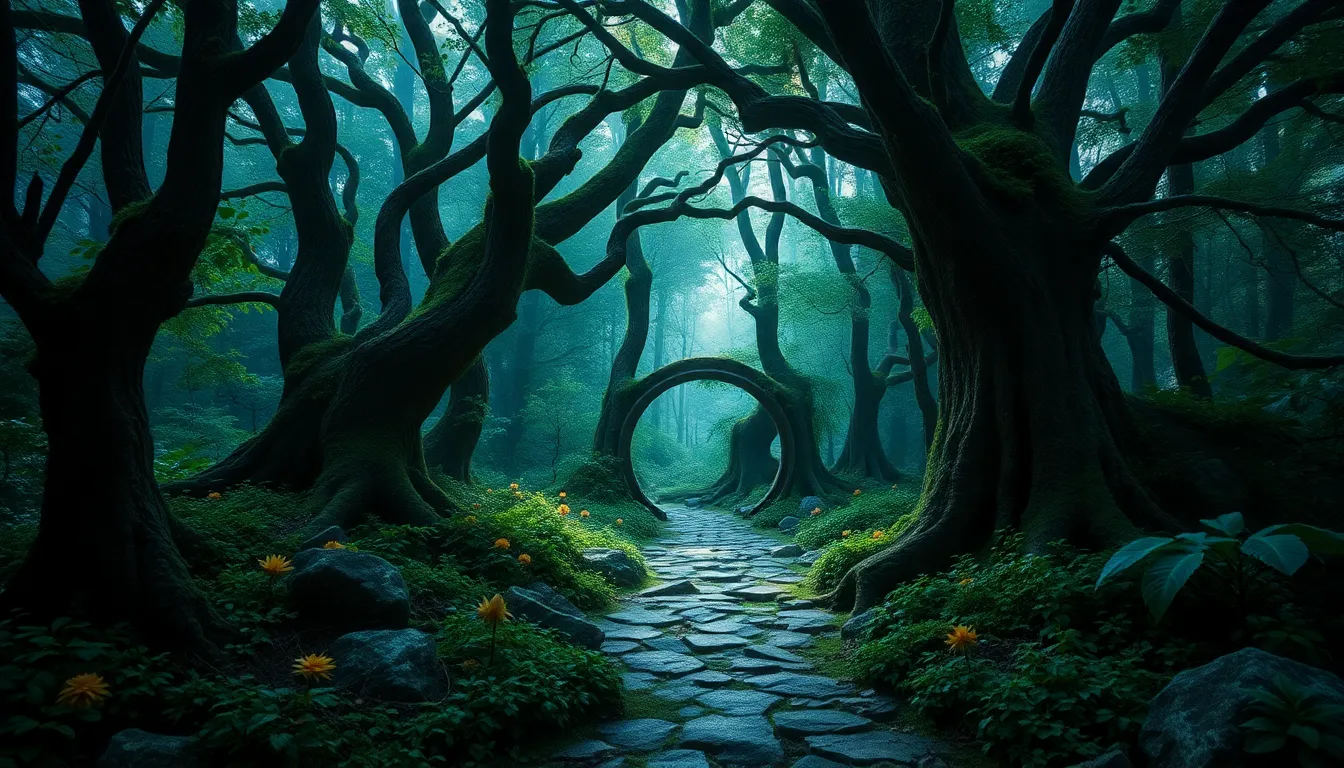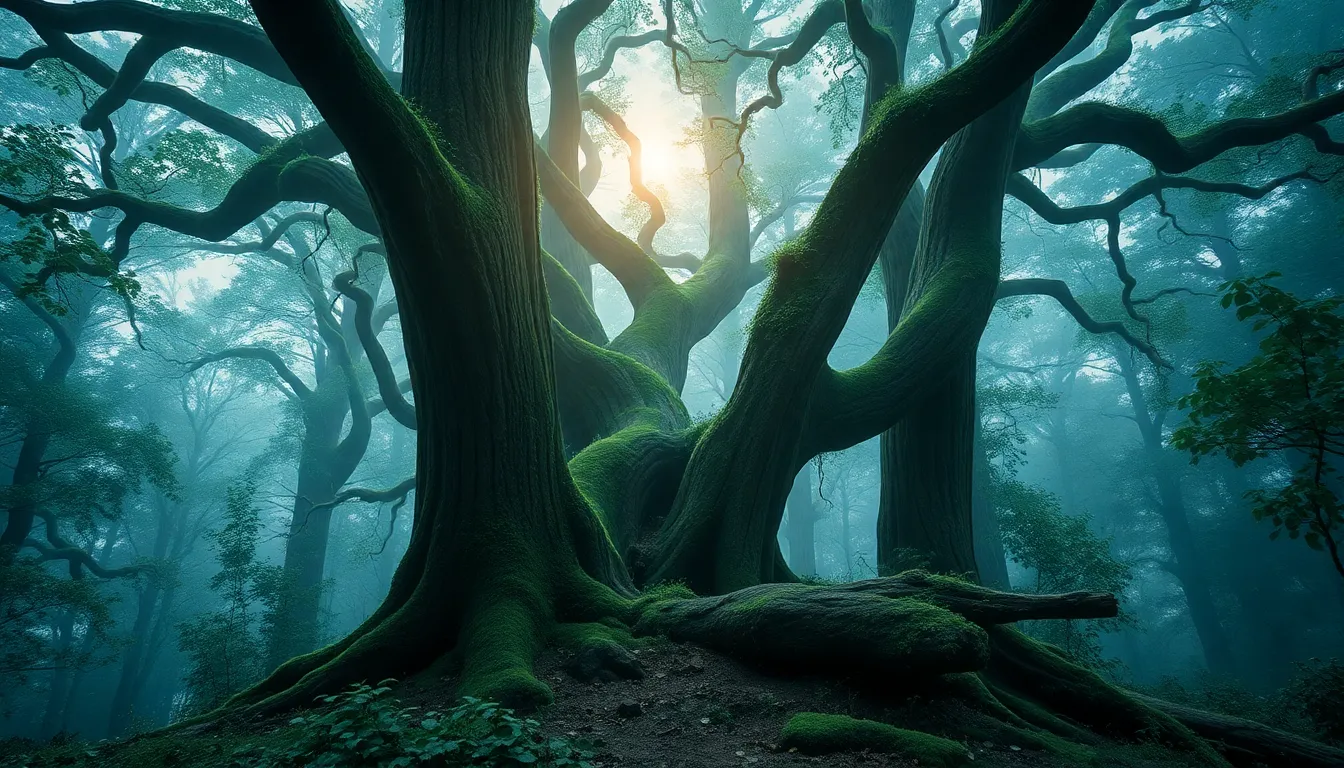The Enchanted Forest: A Tangle of Myths and Nature
1. Introduction: The Allure of the Enchanted Forest
The concept of the enchanted forest has captivated the human imagination across cultures and ages. Enchanted forests represent not just a physical space filled with trees and wildlife, but also a realm where the boundaries between reality and myth blur. These forests are often depicted as magical, harboring secrets and beings that can inspire awe or fear. In many cultures, they symbolize a connection to the spiritual world, a sanctuary for the mystical, and a reminder of nature’s profound beauty and mystery.
Throughout history, enchanted forests have served as the backdrop for tales of adventure, transformation, and the supernatural. They invite exploration and contemplation, intertwining the narratives of nature and folklore in a rich tapestry that defines human experience.
2. Historical Roots: Origins of Enchanted Forest Myths
Enchanted forests have deep historical roots, deeply embedded in the folklore of various cultures. Legends of these mystical woods often reflect the values, fears, and beliefs of the societies that tell them. For instance:
- Celtic Mythology: The Celts revered forests as sacred spaces, often associating them with the Otherworld, where spirits and deities resided.
- Slavic Folklore: In Slavic tales, enchanted forests are home to creatures like Leshy, the forest guardian, who protects the woods and its inhabitants.
- Native American Traditions: Many Native American tribes view forests as living entities, imbued with spirits that require respect and reverence.
These myths reveal a universal human fascination with the unknown and the belief that nature holds deeper meanings and connections beyond the physical realm.
3. The Natural Wonders: Biodiversity in Enchanted Forests
Enchanted forests are not only places of myth but also vital ecosystems rich in biodiversity. They are home to a variety of flora and fauna, many of which are unique to these environments. Some notable features include:
- Unique Flora: Enchanted forests often contain rare trees, vibrant wildflowers, and medicinal plants that have been used in traditional remedies.
- Diverse Fauna: These forests support numerous species, including elusive mammals, colorful birds, and a plethora of insects that contribute to the ecosystem’s health.
The biodiversity found in enchanted forests highlights the importance of conservation efforts. Protecting these ecosystems not only preserves the enchanting qualities of the forests but also ensures the survival of countless species that reside within them.
4. Symbolism of the Enchanted Forest in Literature and Art
Enchanted forests have been a recurring theme in literature and art, symbolizing various human emotions and societal themes. From fairy tales to modern narratives, these forests represent:
- Transformation: Characters often undergo significant personal growth or change within the confines of an enchanted forest.
- Conflict: The forest can symbolize the inner turmoil of characters, presenting challenges that must be faced for growth.
- Escape: Many stories depict the forest as a place of refuge, allowing characters to escape societal norms and expectations.
Famous literary works like “A Midsummer Night’s Dream” by Shakespeare and “The Chronicles of Narnia” by C.S. Lewis illustrate the enchanting and transformative power of these mystical settings. Artists have also captured the beauty and mystery of enchanted forests, conveying emotions that resonate with viewers and invite them to explore their own imaginations.
5. Folklore Creatures: Guardians and Tricksters of the Forest
Enchanted forests are often populated by mythical beings that play significant roles in folklore. These creatures, ranging from benevolent guardians to mischievous tricksters, include:
- Fairies: Often seen as protectors of nature, fairies are believed to have the power to bless or curse those who enter their realm.
- Elves: In many traditions, elves are depicted as wise and skilled beings, often associated with the beauty of the forest.
- Dryads: These tree spirits embody the life force of trees and are considered the guardians of the forest.
These creatures symbolize the duality of nature—its beauty and danger—and represent the belief that forests are alive with spirits that can influence human experiences.
6. Cultural Significance: Enchanted Forests Across Different Societies
Across cultures, enchanted forests are often viewed as sacred spaces. They serve as the setting for rituals, stories, and traditions that connect communities to their heritage and the natural world. Examples include:
- Japanese Shinto: In Japan, forests are considered sacred, with many shrines located within them, emphasizing the connection between nature and spirituality.
- Nordic Traditions: The Norse believed that forests were inhabited by spirits, and rituals were performed to honor these beings.
- Indigenous Practices: Many Indigenous cultures incorporate forests into their spiritual practices, recognizing them as essential to their way of life.
The cultural significance of enchanted forests underscores their role as vital components of human identity and community, linking people to their ancestors and the natural world.
7. The Psychological Impact of Enchanted Forests on Humans
Spending time in nature, particularly in enchanted forests, has profound psychological benefits. Research shows that contact with natural environments can:
- Reduce Stress: Being in a forest environment can lower cortisol levels and promote relaxation.
- Enhance Creativity: The serene and inspiring atmosphere of enchanted forests can foster imagination and innovative thinking.
- Improve Mental Health: Nature therapy has been shown to help alleviate symptoms of anxiety and depression.
Enchanted forests, with their magical aura, also stimulate the mind, encouraging exploration and creative thought, ultimately enriching human experience.
8. Modern Interpretations: Enchanted Forests in Popular Culture
In contemporary society, enchanted forests continue to be a popular motif in various forms of media. Their portrayal in movies, books, and video games reflects ongoing fascination and reinterpretation of these mystical spaces. Notable examples include:
- Disney’s “Frozen”: The enchanted forest in “Frozen II” serves as a backdrop for themes of discovery and reconciliation with the past.
- “The Lord of the Rings”: Tolkien’s portrayal of forests like Lothlórien showcases their beauty and the underlying dangers within.
- Video Games: Titles like “The Legend of Zelda” often include enchanted forests that players must navigate, filled with puzzles and magical creatures.
These modern interpretations not only entertain but also shape public perception of nature, reinforcing the importance of environmental stewardship.
9. Conservation Challenges: Protecting the Enchantment of the Forests
Despite their beauty and significance, enchanted forests face numerous threats that jeopardize their existence. Key challenges include:
- Deforestation: Logging and land development are major threats, leading to habitat loss and fragmentation.
- Climate Change: Changing climate patterns affect forest ecosystems, threatening biodiversity and altering natural processes.
- Urbanization: Expanding cities encroach on forested areas, diminishing their size and ecological integrity.
Efforts to preserve these magical ecosystems are crucial. Conservation initiatives, awareness campaigns, and sustainable practices can help protect enchanted forests for future generations.
10. Conclusion: The Lasting Legacy of Enchanted Forests
Enchanted forests hold a special place in human culture and imagination. They remind us of the beauty and mystery of nature, serving as symbols of transformation, spirituality, and the interconnectedness of life. As we navigate the challenges of modern existence, these forests encourage us to appreciate and protect the natural world around us.
In a time when environmental concerns are paramount, the call to action for the conservation and appreciation of enchanted forests has never been more urgent. By recognizing their value—both as natural treasures and as cultural legacies—we can ensure that their magic continues to inspire future generations.



